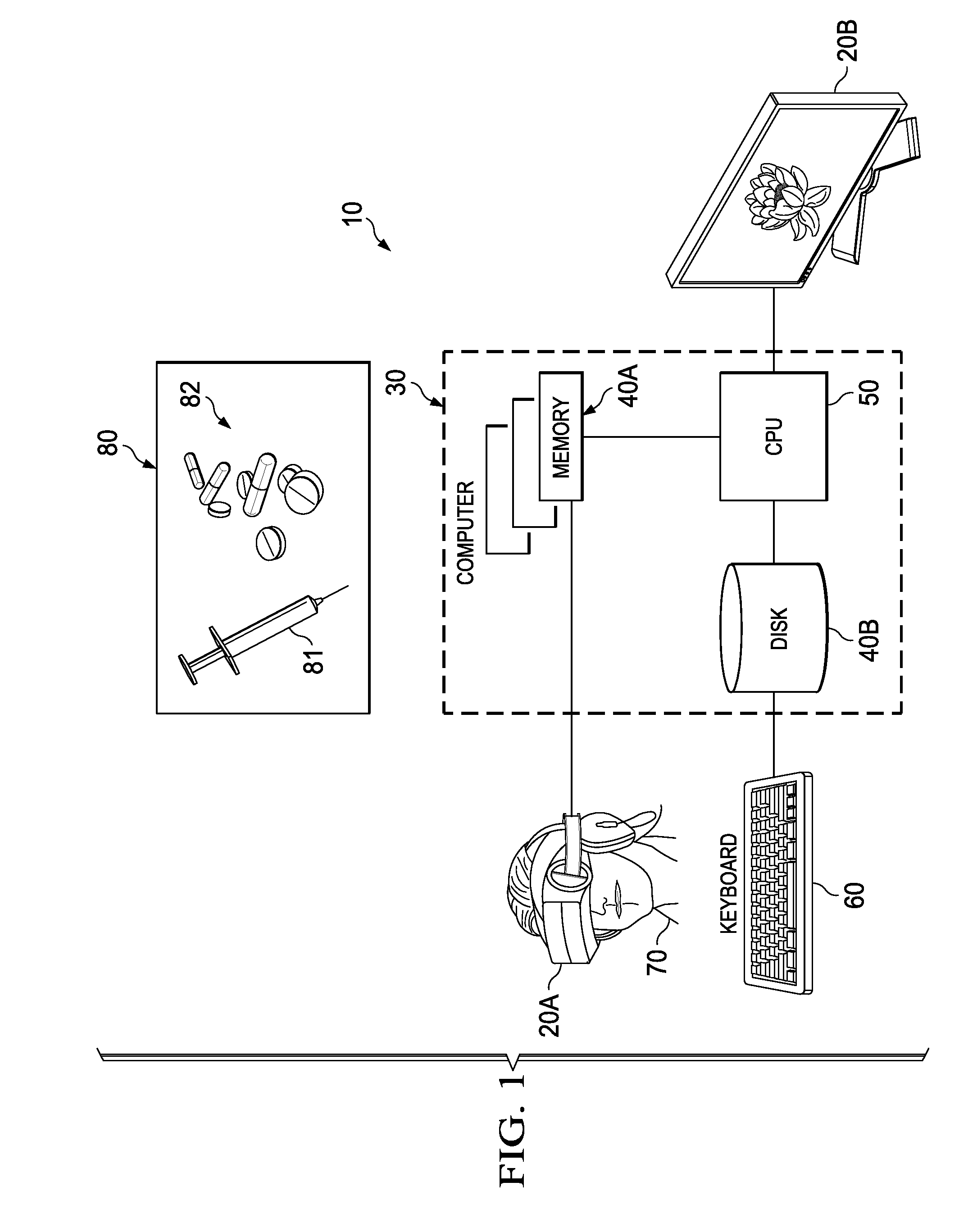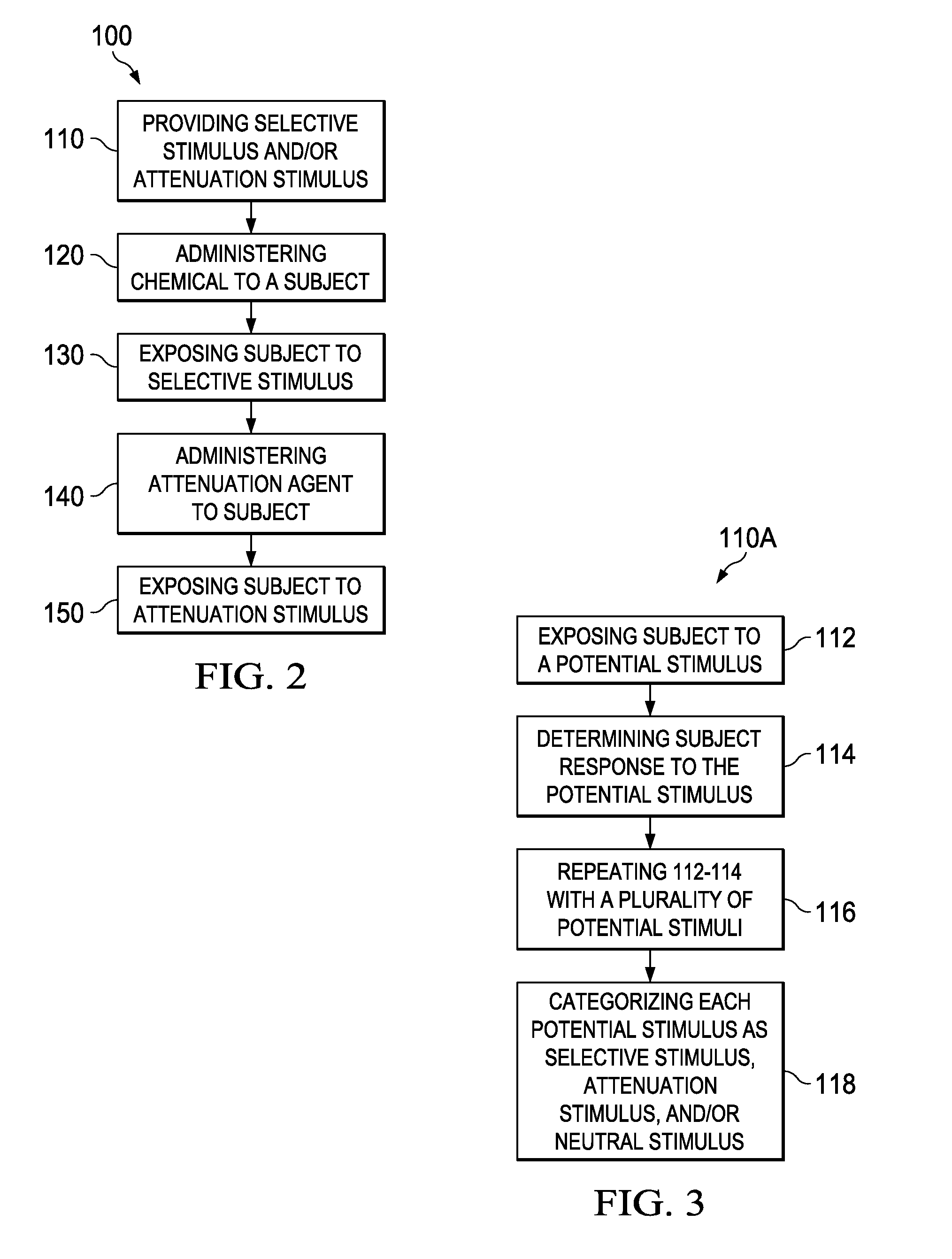Digital drug delivery
a drug delivery and digital technology, applied in the field of brain apparatus and methods, can solve the problems of affecting patients' negative effects, non-selective attack of brain cells, and undesirable affect of non-target regions of the brain, so as to minimize the effect of treatment chemical and stimulate blood flow
- Summary
- Abstract
- Description
- Claims
- Application Information
AI Technical Summary
Benefits of technology
Problems solved by technology
Method used
Image
Examples
example 1
Utilization of Digital Drug Delivery in Treatment of Tumors
[0073]Calibration Phase: Reduction of a tumor(s) in a subject having a brain tumor(s) in a region or regions A of his brain may be effected by the following method. One or more selective stimulus is provided which selectively stimulates the region(s) A of the brain of the subject. Such selective stimulus may be provided by determining a set of one or more stimuli which selectively stimulate region(s) A of the brain of the patient. Such selective stimuli may be determined by exposing the subject to a plurality of potential stimuli. The potential stimuli may be auditory, olfactory, visual, gustatory, tactile or a combination thereof. In embodiments, the stimuli are visual. The response of the subject to exposure to the potential stimuli is determined by measuring the blood flow to various regions of the brain of the subject. Blood flow may be measured by fMRI. The effects of the potential stimuli on blood flow to the various r...
example 2
Utilization of Digital Drug Delivery in Treatment of Addiction
[0079]Pre-Treatment Phase: Therapy to treat addiction may be effected by the following method. One or more selective stimulus is provided which selectively stimulates pleasure centers in the brain associated with the addiction, for example, images of the addictive substance. These stimuli may also be known as addiction cues. Once selective stimuli are determined, the stimuli may be packaged in a mobile device as described hereinabove.
[0080]Treatment Phase. The subject is exposed to (e.g., exposes himself to) addiction cues prior to, during, or after administration of a treatment chemical to the bloodstream of the subject. Exposure can be via the mobile device. The treatment chemical can comprise a dopamine antagonist, whereby treatment seeks to reduce or eliminate the pleasure usually associated with the addiction cues, as neural circuits are no longer being linked to the dopamine reward system. In this manner, the subjec...
example 3
Utilization of Digital Drug Delivery in Selective Memory Erasure
[0082]Pre-Treatment Phase: Selective memory reduction may be effected by the following method. One or more selective stimulus is provided which selectively stimulates region(s) A of the brain of the subject associated with an undesired memory or memories. Such selective stimulus may be provided by determining a set of one or more stimulus which selectively stimulates region(s) A of the brain of the patient. The potential stimuli may be auditory, olfactory, visual, gustatory, tactile or a combination thereof. The selective stimuli may comprise, for example, visual, auditory and / or tactile stimulus revealed by the subject as provoking the undesired memories. The stimuli may all be visual. Once selective stimuli are determined / provided, the selective stimuli may be packaged in a mobile device as described hereinabove.
[0083]Treatment Phase: For treatment, cortisol is administered to the subject, either self-administered or ...
PUM
 Login to View More
Login to View More Abstract
Description
Claims
Application Information
 Login to View More
Login to View More - R&D
- Intellectual Property
- Life Sciences
- Materials
- Tech Scout
- Unparalleled Data Quality
- Higher Quality Content
- 60% Fewer Hallucinations
Browse by: Latest US Patents, China's latest patents, Technical Efficacy Thesaurus, Application Domain, Technology Topic, Popular Technical Reports.
© 2025 PatSnap. All rights reserved.Legal|Privacy policy|Modern Slavery Act Transparency Statement|Sitemap|About US| Contact US: help@patsnap.com



